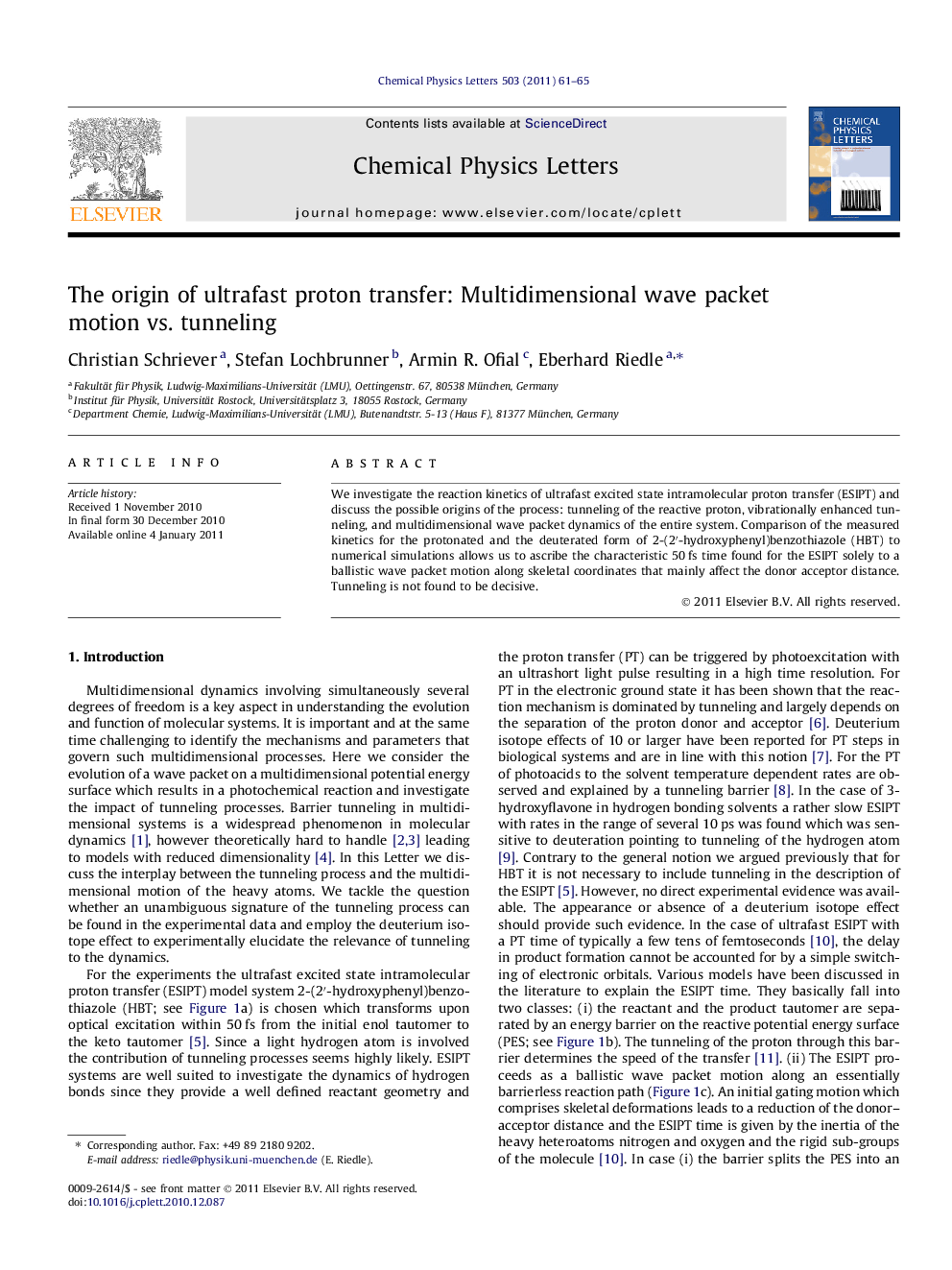| Article ID | Journal | Published Year | Pages | File Type |
|---|---|---|---|---|
| 5384366 | Chemical Physics Letters | 2011 | 5 Pages |
We investigate the reaction kinetics of ultrafast excited state intramolecular proton transfer (ESIPT) and discuss the possible origins of the process: tunneling of the reactive proton, vibrationally enhanced tunneling, and multidimensional wave packet dynamics of the entire system. Comparison of the measured kinetics for the protonated and the deuterated form of 2-(2â²-hydroxyphenyl)benzothiazole (HBT) to numerical simulations allows us to ascribe the characteristic 50Â fs time found for the ESIPT solely to a ballistic wave packet motion along skeletal coordinates that mainly affect the donor acceptor distance. Tunneling is not found to be decisive.
Graphical abstractFemtosecond studies on deuterated 2-(2â²-hydroxyphenyl)benzothiazole exclude tunneling contributions in ultrafast excited state intramolecular proton transfer.Download high-res image (73KB)Download full-size imageResearch highlights⺠Excited state ultrafast proton transfer governed by multidimensional wave packet motion. ⺠Tunneling contribution insignificant for dynamics. ⺠Comparison of proton and deuteron transfer allows unambiguous analysis. ⺠Proton transfer modeling compared to 20 fs-pump-probe measurements.
